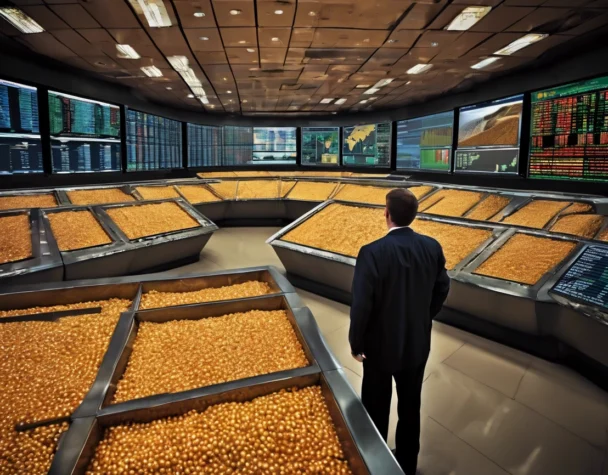
Global Commodity Markets Today: Key News and Trends
Fri, March 21, 2025Global commodity markets have been experiencing significant volatility recently, driven by a combination of geopolitical developments, economic indicators, and shifts in supply and demand. As of March 21, 2025, prices of key commodities like copper, oil, and agricultural products are fluctuating, reflecting ongoing uncertainties and market dynamics.
Metals Market Moves: Copper and Nickel in the Spotlight
The metals market is seeing notable shifts, with copper and nickel at the forefront of attention. Copper prices have recently surged past the $10,000 per tonne mark for the first time in five months. This significant increase is primarily driven by heightened demand and mounting concerns over potential U.S. tariffs. Traders are rushing to secure supplies ahead of any import duty announcements, signaling unease about the future of the market.
In contrast, the nickel market is dealing with the fallout from past turbulence. The London Metal Exchange (LME) has been fined £9.2 million for its handling of the 2022 nickel market chaos, when prices skyrocketed amid geopolitical tensions. This fine underscores the ongoing need for robust risk management practices and effective oversight in commodity trading. Market participants remain cautious, as the legacy of that crisis continues to impact perceptions of stability.
To learn more about the impacts on metal prices and trading practices, check out Financial Times’ coverage on copper price hikes and The Guardian’s insights on the LME fine.
Agriculture and Energy Markets: Navigating Price Swings
The agricultural commodity market has also faced turbulence, particularly in corn prices. Chicago corn prices have exhibited remarkable volatility, with December futures experiencing a steep 7% drop over just eight sessions. This early-year decline, the sharpest since 2011, reflects broader economic uncertainties and the challenges of maintaining price stability amid fluctuating demand. Agribusiness giants such as Archer Daniels Midland and Cargill continue to grapple with declining profits, struggling to escape the cyclic nature of commodity booms and busts.
Meanwhile, the energy sector is reacting to evolving geopolitical developments. Oil prices have recently rebounded from earlier losses as U.S. petroleum-product stockpiles fell, countering the impact of a third consecutive weekly rise in crude inventories. Additionally, Russia’s agreement to a 30-day pause on energy infrastructure attacks has helped ease supply fears, stabilizing prices in the short term.
However, China’s oil demand growth appears to be tapering, driven by slower consumption of gasoline, diesel, and jet fuel. Analysts are predicting that China’s overall oil demand could plateau within the next decade as petrochemical needs rise but transportation fuel demand softens. This shift could have profound implications for global oil markets, particularly as alternative energy sources become increasingly prominent.
What’s Next for Global Commodity Markets?
With so many moving parts, investors and traders should maintain a vigilant approach to the commodities sector. Monitoring economic indicators, geopolitical developments, and corporate earnings is essential for making informed decisions. Given the interconnected nature of global markets, staying informed through credible financial news sources will help navigate potential market swings.
For more insights on agricultural market trends, visit Reuters’ latest report on corn prices.

